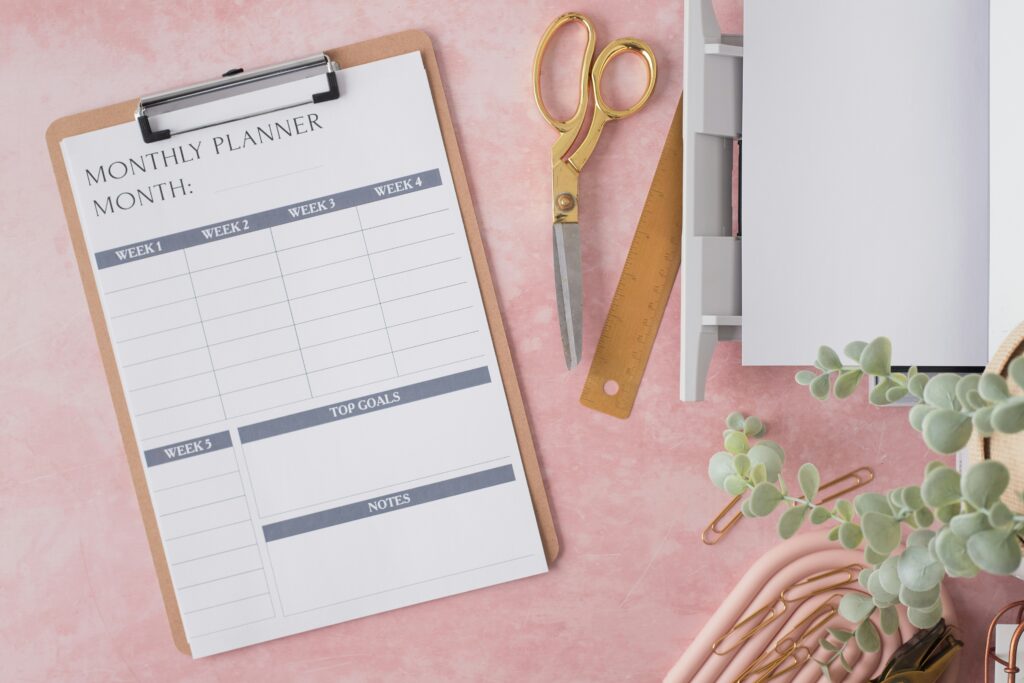
Here’s a paradox: taking time off is proven to be beneficial and yet, many Americans don’t prioritize it.
The benefits of downtime—from a short break in the day to longer vacations—are well-documented in the literature. Most of us can also speak from first-hand experience how rejuvenating taking some time off work can be.
And yet, many people simply don’t do it. They either don’t have access to paid time off, feel that they can’t take it, or struggle to manage it as a self-employed person or business owner.
Here we’ll explore this paradox and offer five ideas for how to prioritize downtime to boost professional growth and personal wellbeing.
Why We Should Take Time Off But Don’t: Research Overview

First, let’s look at the benefits of downtime. There’s plenty of personal and anecdotal experience that demonstrates it, which is backed up by the research. Studies show that:
- Short vacations can improve stress levels and well-being.
- Vacation frequency is associated with better metabolic health and symptoms.
- Behaviors like sleep and daily movement improved after returning from vacation.
This sampling of data demonstrates how taking time away from work has both mental and physical health impacts.
There are many reasons why this could be, including a simple break from daily stressors, more time to sleep or relax, opportunities to pursue joyful hobbies, and greater connection with loved ones.
Extended breaks, like a completely unplugged vacation, allow your body and brain to completely disconnect and reap the benefits of time off.
Short breaks from work are important, too. Daily and weekly downtime offers a chance to “reset” and jump back into work with more creativity, focus, and productivity. One study found that 94% of workers feel happier when they take a lunch break; another study found that “microbreaks” (i.e., a short, voluntary respite in the workday) are important to manage energy and engagement levels.
The moral of the story here is that time away from work is important for both your work performance and personal well-being.
Unfortunately, many Americans are simply not taking time off. Consider these statistics:
- Nearly a third of US employees do not have access to paid time off.
- More than 4 in 10 US workers don’t take all their paid time off.
- Over half (52%) of employees report working while on PTO.
- In 2023, workers are 40% more likely to say they never stop for a midday meal than they were a year ago.
There are some overlapping problems here—not having access to time off and also choosing not to take it. Whatever the reasons are, it’s negatively impacting personal and professional well-being. Here’s how to turn things around and prioritize time off.
How to Take Time Off: 5 Tips to Try
Taking time off, whether it’s a short or long break, is not as simple as “just doing it.” A lot of people face barriers that impact their ability to do so.
A few examples of barriers include:
- No access to paid time off
- Workplace “norms” that stigmatize vacations
- Internal feelings of being lazy or unproductive
- Difficulty setting barriers as a self-employed person
Here are some tips that can help you break down barriers and take the time you deserve.
1. Focus on Your Mindset

Do you struggle to take time off because you feel pressure to be productive or successful all the time? Or, do you worry that your small business will fall apart while you’re away?
Your mindset can be the single biggest barrier to taking time off, especially for those who are self-employed and feel the pressure to go-go-go. But as we established, taking time off is healthy and important for your success. So, dig deeper into negative mindsets that are holding you back and work to develop a new one. You can do this by:
- Talking with family, friends, or a professional about what’s holding you back.
- Journaling and writing about your thoughts and feelings.
- Educating yourself with data and information about the benefits of time off.
- Reflecting on how time off has benefited you in the past.
2. Set Goals

Goal-setting is important for professional success because it helps you stick to a specific trajectory. And, you can use the same strategies to ensure you are taking time off in your schedule. Take some time to sit down and set strategic downtime goals. This might look like:
- Identifying how you want to use lunch breaks during the day.
- Determining a number of days you’ll take off in the year (either your PTO or otherwise).
- Setting financial goals for vacations or trips.
- Figuring out things you want to use your time off to do, such as a creative project or personal goal like running a half-marathon. These goals will help you stick to your time-off goals.
3. Plan Ahead

Once you have your goals in mind and the right mindset, taking time off requires careful planning.
This is especially true for self-employed individuals or small business owners, who have a harder time achieving work-life balance. You may not have teammates or a manager who can encourage you to take your PTO or step in and cover you while you’re gone. And, time off often means loss of income during those non-work days.
The answer here is to plan, plan, plan. Consider these things as part of your time-off roadmap:
- Specific times you can take off work and keep your operations running.
- Partners and people who can help pick up the slack, as needed.
- How you’ll manage cash flow and financial obligations.
- What you can do to automate while you’re offline.
- How to communicate your plan with others.
4. Choose the Right Workspace

Something else that significantly impacts your ability to take time off is your workplace. If you’re an employee, you’ll want to choose somewhere that both offers paid time off and has a culture of encouraging people to take their breaks and vacation.
If you’re self-employed or own a business, you can also choose a workspace that helps you prioritize time off. A coworking space is a flexible environment that helps support work-life balance.
At The Post, for example, we’re committed to fostering well-rounded professional lifestyles. This happens in a few ways:
- Fostering connections through events, activities, and organic connections. When you have a like-minded community of people around you, it’s easier to stay accountable to goals or even just find someone to take a break with each day!
- Virtual office services like mail handling and voicemails help keep your operations going while you take a break.
- Flexible, varied workspaces that promote taking breaks. With a kitchen, lounges, and outdoor areas, there are lots of opportunities to step away from the computer for a break.
5. Build Your Community

Community is the secret weapon to establishing a rhythm of downtime and rest. Why? There are a few reasons:
- You have people to take breaks with! If you have colleagues or friends to take your lunch with, you’re more likely to take it. If you have friends to go on a Tucson staycation with, you’re more likely to do it. People motivate you to take time off.
- Your community will keep you accountable. If you’ve shared that you want to prioritize time off, loved ones in your life can help keep you accountable to that.
- Good influences of like-minded professionals. If you surround yourself with other people who care about rest and relaxation, you’ll be positively influenced to do the same. This goes both ways, too—if you’re a leader or manager, you can set the example for others to prioritize time off in their schedule.
Taking time away from work, both for short breaks and longer vacations, is shown to improve professional performance and personal well-being. And yet, so many people just aren’t prioritizing it.
But that ends now. Won’t you join us in making rest and relaxation a priority in your schedule? These tips can help transform your mindset and schedule to make it a reality.
And if you’re looking for a flexible workspace that helps you maintain a better work-life balance, you’ll find it here. Book a tour of The Post today.
